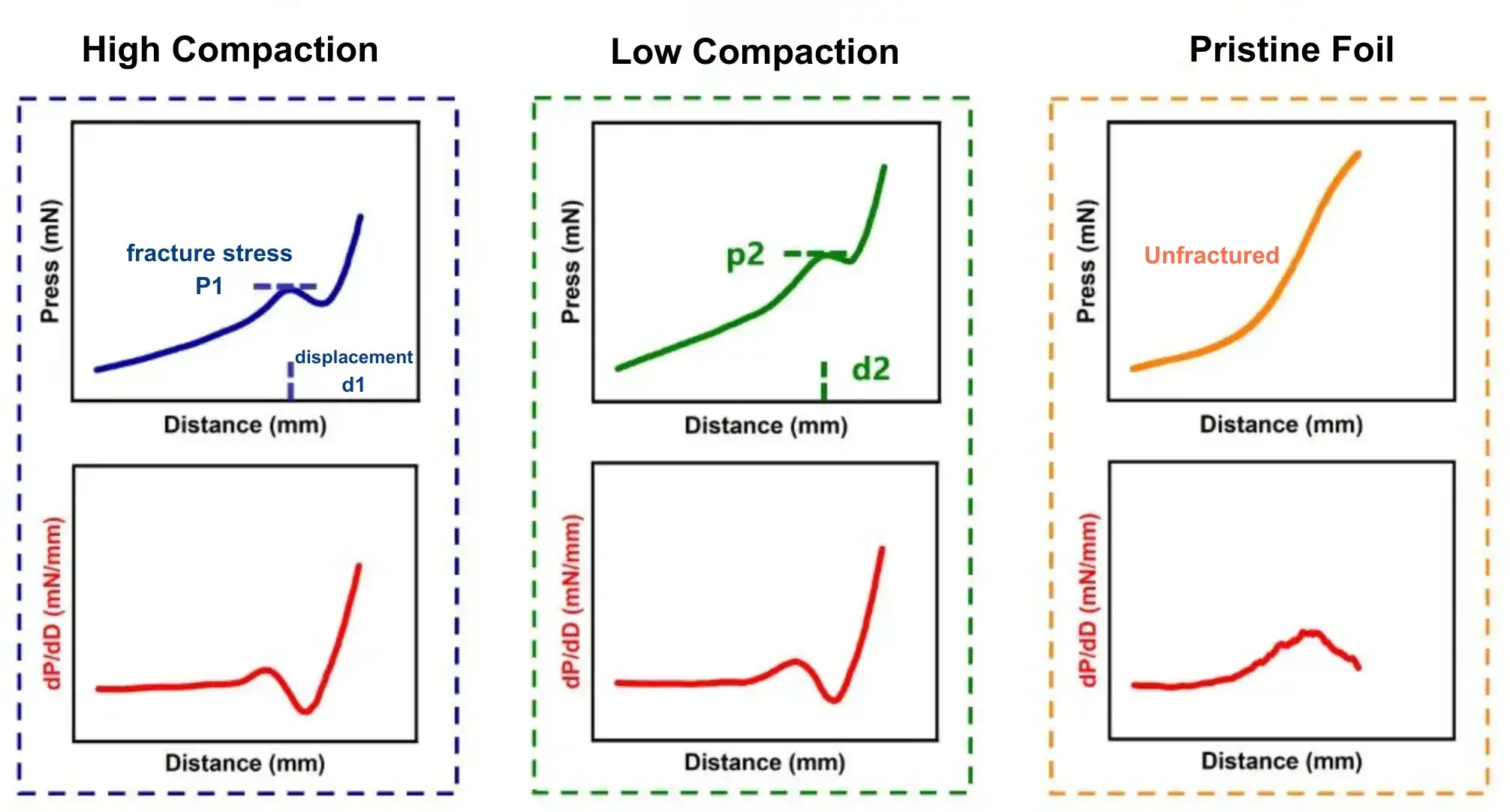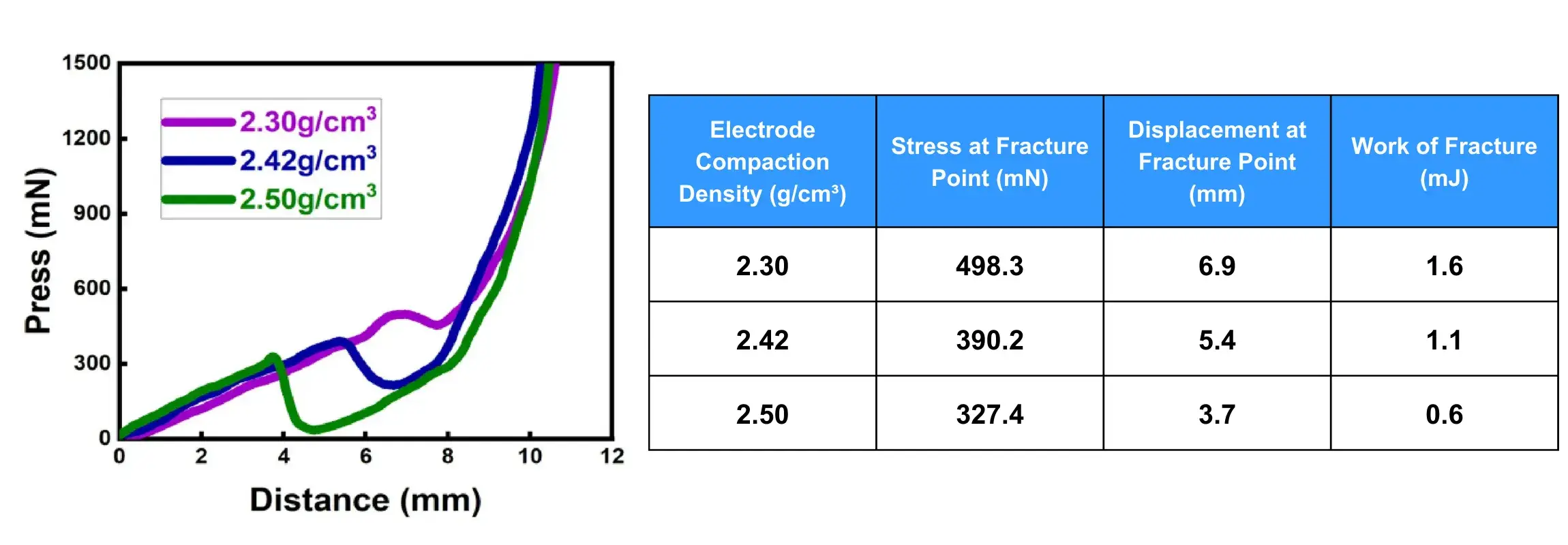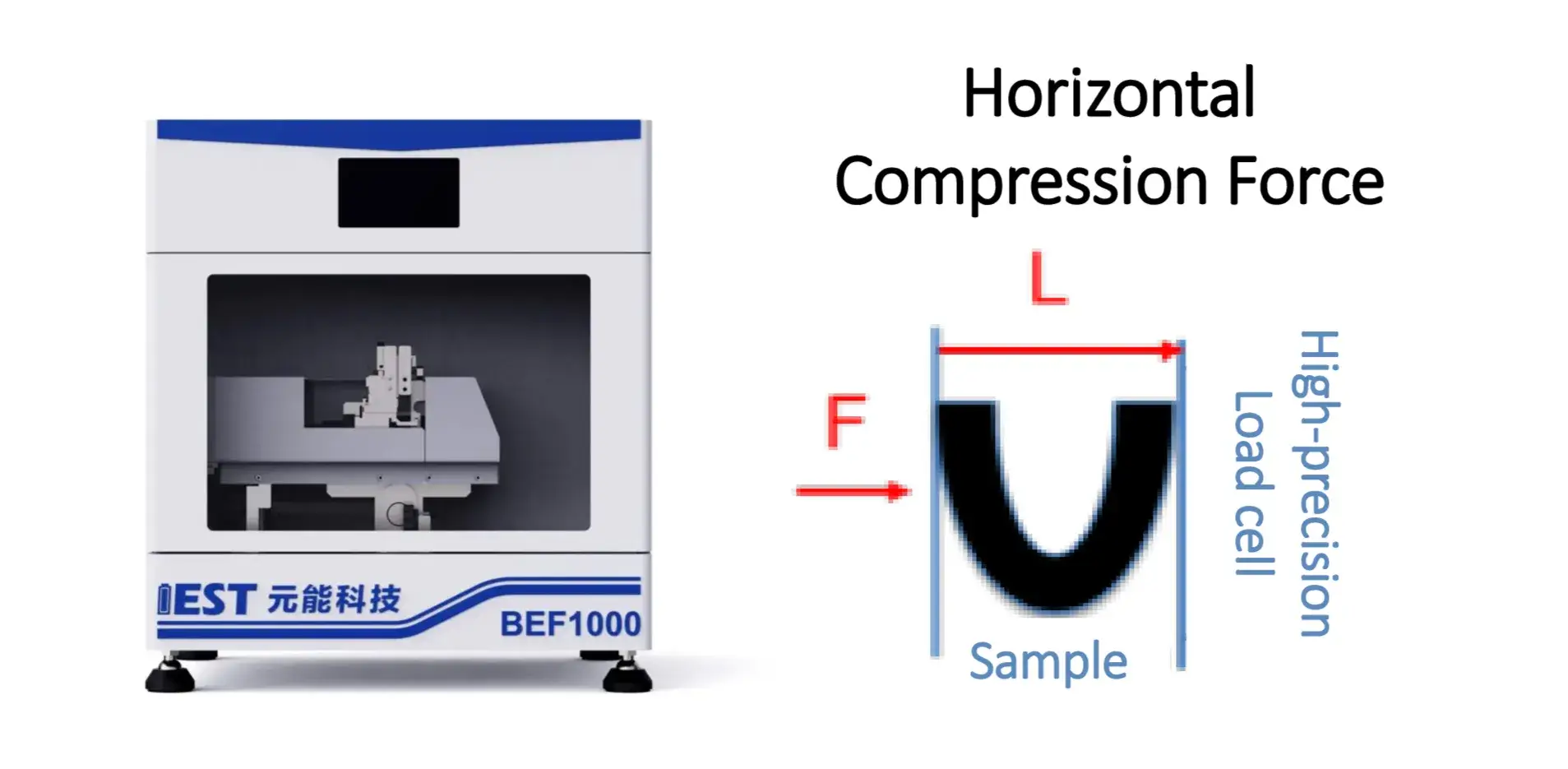-
iestinstrument
Novel Battery Electrode Testing Solution | Electrode Flexibility Tester BEF1000
1. Background
With the rapid advancement of lithium-ion battery (LIB) technology, the performance of electrode materials has become a critical factor influencing overall battery performance. As a key component of the electrode, the flexibility of the electrode sheet (or “coating”) directly impacts battery cycling stability and safety. Consequently, the testing and evaluation of electrode flexibility are paramount.
Currently, various methods exist for testing the flexibility of battery electrode sheets. Different manufacturers may employ distinct approaches based on their product characteristics and testing requirements.
| Methode | Experimentele Methode | Problem |
|---|---|---|
| Observe length changes | (1) Perform a compression test on the bent end of the electrode sheet, measuring the change in length before and after fracture. (2) Secure one end of the electrode sheet onto the test platform, allowing the other end to hang freely; observe the degree of sagging. | Non-contact precise length determination; repeatability and consistency require further investigation. |
| Check for powder loss and cracking | Conduct tests by winding the electrode sheet to different diameters and varying numbers of turns; observe the extent of powder shedding, crack size, and crack morphology. | Relies on operator experience and subjective judgment; metrics cannot be quantified. |
| Check for light leakage and light transmission | Fold the electrode sheet face-to-face or roll it, then unfold it; illuminate from the backside and observe light transmission/leakage. | Relies on the observer's subjective judgment; cannot provide quantitative data. |
| Test stress-strain curve | (1) Roll the electrode sheet into a cylinder; test the load-distance relationship under vertical compression. (2) Bend the electrode sheet; apply downward compression to obtain the stress-compression distance relationship curve. (3) Lay the electrode sheet flat; perform compression testing in the horizontal plane to obtain the displacement-deformation curve. (4) Suspend the electrode sheet vertically; correlate the displacement value during upward pulling with the corresponding measured force value. (5) Compare folded versus unfolded electrode sheets; use the ratio of measured tensile forces to indicate flexibility. | Issues exist: varying bending angles, differing radii of curvature, non-uniform force application, and poor reproducibility; lack of standardized equipment; repeatability and consistency require improvement. |
Figure 1. Common Methods for Testing Battery Electrode Flexibility
Most current methods focus on observing the deformation and fracture behavior of the electrode sheet under applied force. Therefore, methods measuring the stress-strain curve remain relatively direct, efficient, and widely accepted. However, standardized equipment and testing methodologies for this specific measurement are still lacking. Many manufacturers continue to rely on manual testing methods, which suffer from significant errors, poor consistency, and yield limited information.
2. Electrode Flexibility Testing Solution
To standardize flexibility testing, Yuaneng Technology has developed the novel Electrode Flexibility Tester BEF1000 (Figure 2), designed to differentiate the flexibility characteristics of various electrode sheets. The instrument utilizes the fundamental principle of stress-strain curve measurement: the electrode is bent at a specific angle, secured in the test fixture, and then deformed by applying displacement. The stress and strain (force-displacement) experienced by the electrode at varying degrees of deformation are measured to assess its flexibility.
Figure 2. IEST Battery Electrode Flexibility Testing System (BEF1000) Equipment and Schematic Diagram of Test Setup
Furthermore, the BEF1000 innovatively incorporates three key features:
- Precise Control & Measurement: The instrument provides accurate displacement control and measurement, coupled with a high-precision force sensor for real-time pressure data acquisition. It supports constant-speed compression and reciprocating (cyclic) compression test modes.
- 90-Degree Rotation: The entire testing mechanism can be rotated by 90 degrees, accommodating both horizontal (transverse) and vertical (longitudinal) pressure application based on tester requirements, suitable for diverse scenarios.
- Offline Clamping: Electrodes can be clamped offline and subsequently installed into the testing mechanism. Direct clamping within the test position can cause electrode twisting/misalignment and is operationally inconvenient.
3. Electrode Flexibility Test Cases
3.1 Different NMC Cathode Electrodes
We selected NCM cathode sheets with the same material composition but different compaction densities (high compaction, low compaction) and pristine foil current collectors. Multiple 3×4 cm samples were cut from each type for parallel testing. Tests employed a constant compression speed of 0.2 mm/s. Parallel test results showed good consistency; representative single-test force-displacement curves and their corresponding first derivative plots are shown in Figure 3. (Note: Figures share identical axes; specific values are omitted for clarity).

Figure 3. Force-Displacement Curves and First Derivative Plots for Different NCM Electrodes and Pristine Foil
Comparison reveals distinct force-displacement curve shapes and behaviors. The fracture stress (p1) of the high-compaction electrode is lower than that of the low-compaction electrode (p2), and the compression displacement at fracture (d1) is less than d2. This indicates the high-compaction electrode fractures at a lower deformation level. The pristine foil did not fracture under the same test conditions. This aligns with expectations: Flexibility ranking: Pristine Foil > Low-Compaction Electrode > High-Compaction Electrode. The first derivative plot for the high-compaction electrode clearly shows fracture behavior: a distinct inflection point followed by a rapid stress drop.
3.2 LFP Cathodes with Different Compaction Densities
Similarly, LFP (Lithium Iron Phosphate) cathode sheets with different compaction densities were cut into 3×4 cm samples for parallel testing (constant speed: 0.2 mm/s). Consistent parallel results allowed the selection of representative single-test force-displacement curves (Figure 4).

Figure 4. Force-Displacement Curves for LFP Cathodes with Different Compaction Densities and Fracture Energy Calculation
Results demonstrate that electrodes with higher compaction density exhibit lower fracture stress and smaller compression displacement at fracture. Examining the curve segment from origin to fracture, electrodes with higher compaction density exhibit a slightly steeper slope, indicating less strain for a given stress. The energy absorbed from initial loading to fracture point, calculated as the area under the force-displacement curve, represents the electrode’s fracture energy. The table in Figure 4 shows the 2.50 g/cm³ electrode has the lowest fracture energy. Combined analysis indicates the flexibility ranking: 2.30 g/cm³ > 2.42 g/cm³ > 2.50 g/cm³.
4. Additional Information
IEST novel Electrode Flexibility Tester BEF1000 evaluates the flexibility of battery electrode sheets by measuring the real-time force-displacement curve during bending/compression, enabling differentiation between electrodes with varying flexibility characteristics. R&D personnel in the lithium battery industry with relevant needs are welcome to submit samples for testing.
- Test Samples: Various anode and cathode sheets composed of different materials, structures, and manufacturing processes.
- Sample Quantity: 5 electrode sheets, each ≥ 10×10 cm.
- Applications: Material development departments, quality control departments at material suppliers and cell manufacturers; research groups at universities conducting material development. Applicable for material design, quality control, process optimization, and performance evaluation.
Contact Us
If you are interested in our products and want to know more details, please leave a message here, we will reply you as soon as we can.



